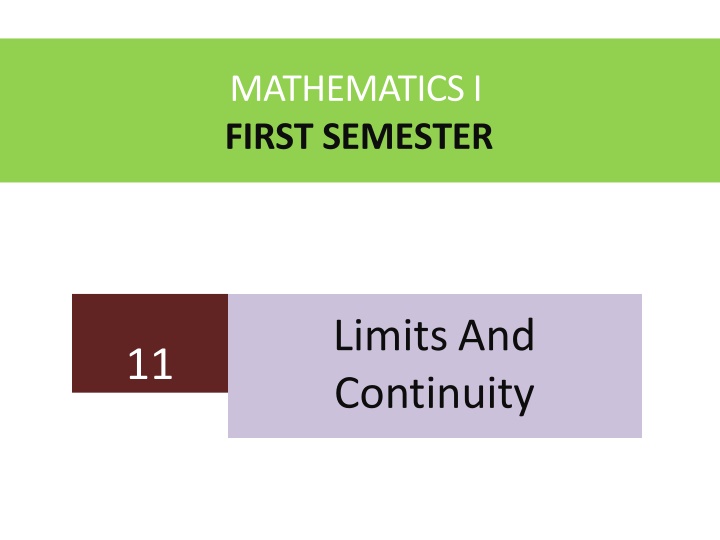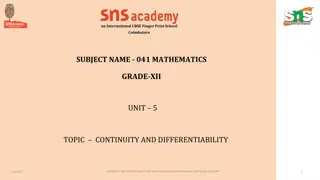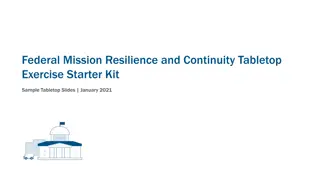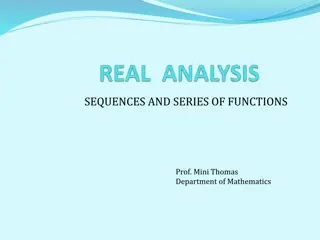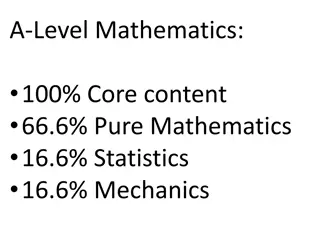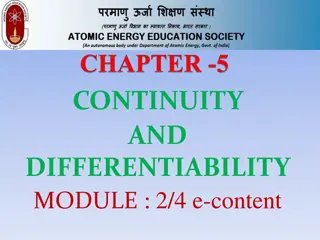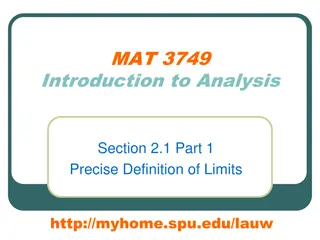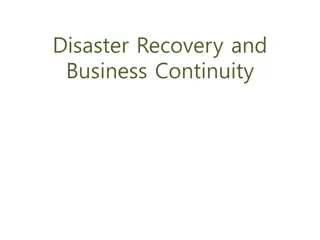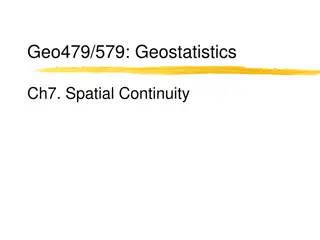Limits and Continuity in Mathematics: Exploring Functions and Calculating Limits
This content delves into the concept of limits in mathematics, focusing on functions, limit laws, one-sided limits, and limits involving trigonometric functions. It includes examples and explanations on how to calculate limits using various techniques.
Download Presentation

Please find below an Image/Link to download the presentation.
The content on the website is provided AS IS for your information and personal use only. It may not be sold, licensed, or shared on other websites without obtaining consent from the author.If you encounter any issues during the download, it is possible that the publisher has removed the file from their server.
You are allowed to download the files provided on this website for personal or commercial use, subject to the condition that they are used lawfully. All files are the property of their respective owners.
The content on the website is provided AS IS for your information and personal use only. It may not be sold, licensed, or shared on other websites without obtaining consent from the author.
E N D
Presentation Transcript
MATHEMATICSI FIRST SEMESTER LimitsAnd Continuity 11
Outlines Limit of a Function Calculating Limits Using the Limit Laws One-Sided Limits and Limits at Infinity One-Sided Limits Limits Involving (sin ?)/? Finite Limitsas ContinuousFunctions x
Limit of a Function Let (x) be defined on an open interval about x0 except possibly at itself. We say that the limit of (x) as x approaches x0 is the number L, andwrite
Calculating Limits Using the Limit Laws The next theorem tells how to calculate limits of functions
Solution : We cannot substitute because it makes the denominatorzero.
Limits Involving (sin) A central fact about (sin?) ?is that in radian measure its limit as ? 0 is 1. We can see this in Figure, EXAMPLE7: Show that, a. b.
x Finite Limits as
EXAMPLE 9: Find the points at which the function in Figure is continuous andthe points at which is discontinuous. Solution: The function is continuous at every point in itsdomain [0, 4] except at x = 1, x = 2, and x =4.
